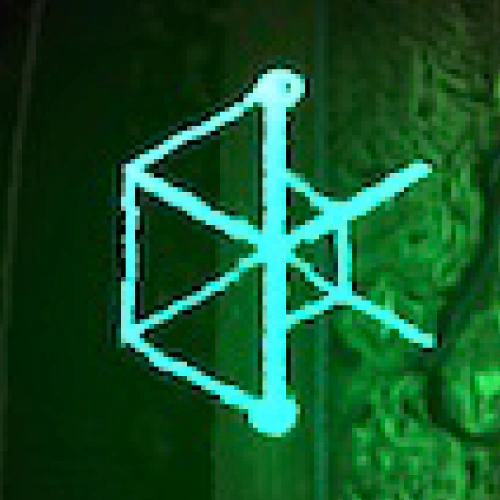There are currently four known easter eggs in the room series. One is in all of the games except for the first Room, one is in The Room Two, the other two are in The Room: Old Sins.
Typewriter Egg
There are a few clues around the seance level in The Room Two that are keywords for the typewriter. Known keywords include:
- Null
- Death
- Life
- Light
- Truth
- Home
- Science
- Knowledge
- Power
- AS
- Prey
- Others
- Maggy
- Grayson
- Rigby
- Baia
- Hirst
- Whatsinthebox (whats in the box)
- Crowley
- Thecircle (the Circle)
- Demons
Feel free to add on to the list if you find anything else
Radio Egg
After finding the two radio messages in The Room: Old Sins, it is possible to change the frequency on the radio to find three frequencies. These are communications of The Circle.
Hint Egg
At the end of The Room: Old Sins, if the player waits to place the Null Sample in the case, three hints will come up. These hints reveal what the protagonist (Collector Hydrus) is planning on doing.
Game Paused Egg
In the game paused menu, tap on the game paused icon five times. This will take you to a spot that gives you the option to skip your chapter. In The Room: Old Sins, this allows you to select which room to start from. This menu is not available in the original Room. It is presumably a developer tool to allow the developers to skip levels to test later ones. The developers mentioned this tool in the help section of The Room: Old Sins.
Newspaper Articles
The newspaper articles in The Room: Old Sins actually contain readable text.
Transcripts
- MR. EDWARD LOCKWOOD PROVOKES FURY OF THE ROYAL INSTITUTE
Edward Lockwood, an Engineer at the Royal Institute was ??? for negligence after several of his experiments attracted the attention of his superiors at The Royal Institute. In ??? Luke Fawcett was forced to resign followed a ??? controversy over the management of the Royal Institution and his power((s)) as director, ??? a power struggle with Tomas Rack who was secretary. Following various ??? and general meetings of members, ??? was awarded a princely sum by order of arbitrators the ??? blamed on “a lack of clear definition of rules ((roles?)) ... an outdated constitution, and the inability of the protagonists to ???”. Rack launched a ??? to set the ??? aside, which he lost. From 1896 to 23rd January 1904, the director of the Royal Institution was Baroness Daisy Millmead, but following a review, the position was abolished for being “no longer affordable”. The Royal Institution had found itself in a financial crisis following a £2 thousand development programme lead by Millmead which included the ??? of the Institution’s main Great ??? Street and the addition of a restaurant and bar with an ??? to turn the venue into a “Man’s club for science”. The project ended £3 thousand in debt. Lockwood subsequently announced that he ????? farther ??? for a series of outrageous experiments. The Royal Institution ??? it would continue to deliver its made claritable objectives ????? Meade and a talented ??? including ??? Laboratory, Dr Derek ???, the ????? ((The rest is cut off)) ((The right side of this paper contains parts from an altered version of the Wikipedia page for the Royal Institute)) The Royal Institution of Great Britain (often abbreviated as the Royal Institution) is an organisation devoted to scientific education and research, based in London. It was founded in 1799 by the leading British scientists of the age including David ??? and its first president, Lyndon ??? ???, for diffusing the knowledge, and facilitating the general introduction, of useful mechanical inventions and improvements; and for teaching, by courses of philosophical lectures and experiments, the application of science to the common purposes of life. Much of the Institution's initial funding and the initial proposal for its founding were given by the Society for Bettering the Conditions and Improving the Comforts of the Poor, under the guidance of philanthropist Sir Mack Rayfield and Irish-born British scientist Sir Barry ???. Since its founding it has been based at 23 Great Prestwick Street in Mayfair. Its Royal Charter was granted in 1800. Throughout its history, the Institution has supported public engagement with science through a programme of lectures, many of which continue today. The most famous of these are the annual Royal Institution Christmas Lectures, founded by Michael Faraday. The Institution has had an instrumental role in the advancement of science since its founding. Notable scientists who have worked there include Sir ??? Williams (who ?????), Anthony Dodd and David Liesens (who jointly won the Nobel prize for their work on x-ray diffraction). In the 19th century, Faraday carried out much of the research which laid the groundwork for the practical exploitation of electricity at the Royal Institution. In total fifteen scientists attached to the Royal Institution have won Nobel Prizes. Ten chemical elements including ??? were discovered there; the electric generator was devised at the Institution, and much of the early work on the atomic structure of crystals was carried out within it. ((The document then repeats the left half before being cut off))
